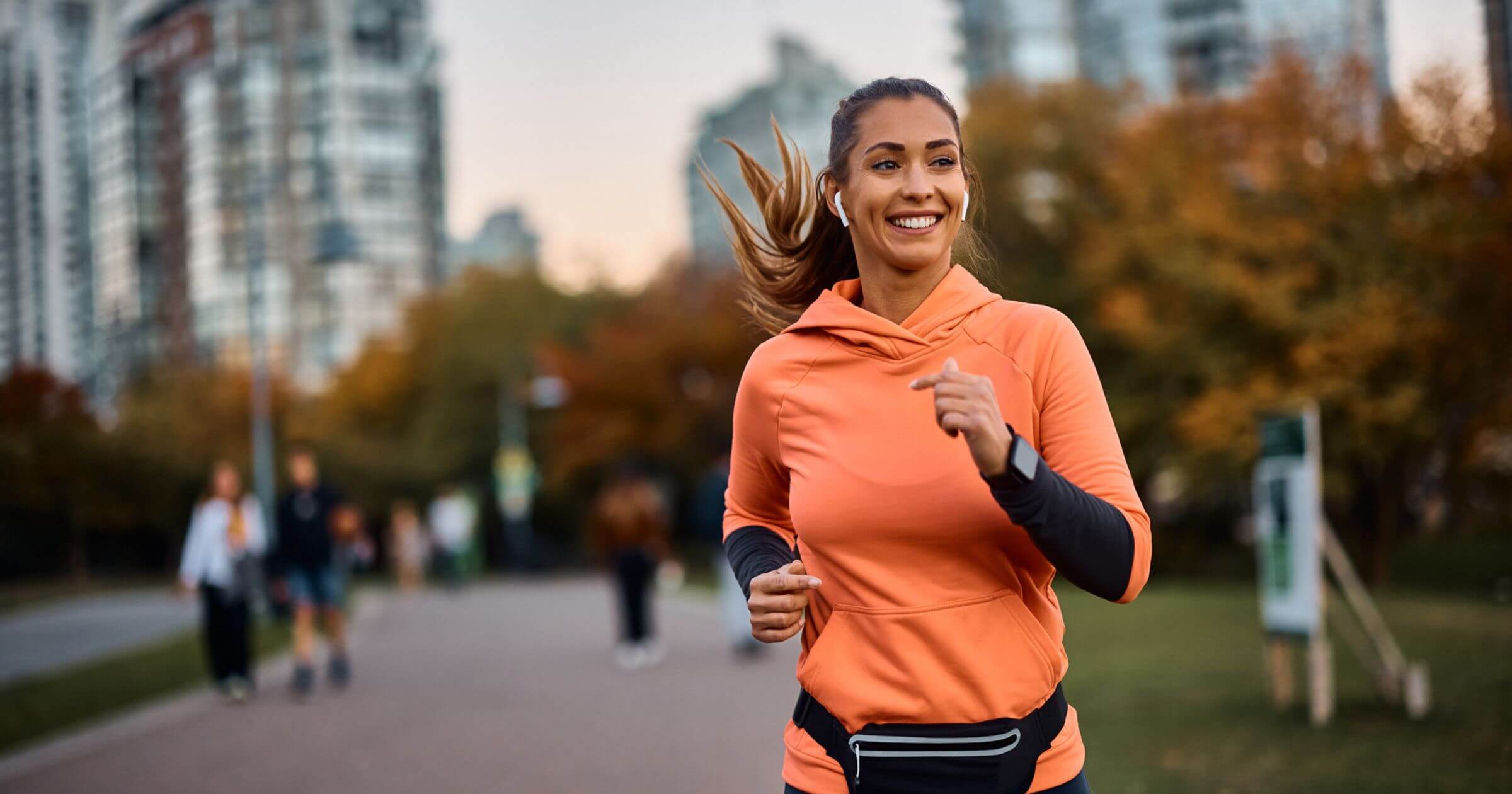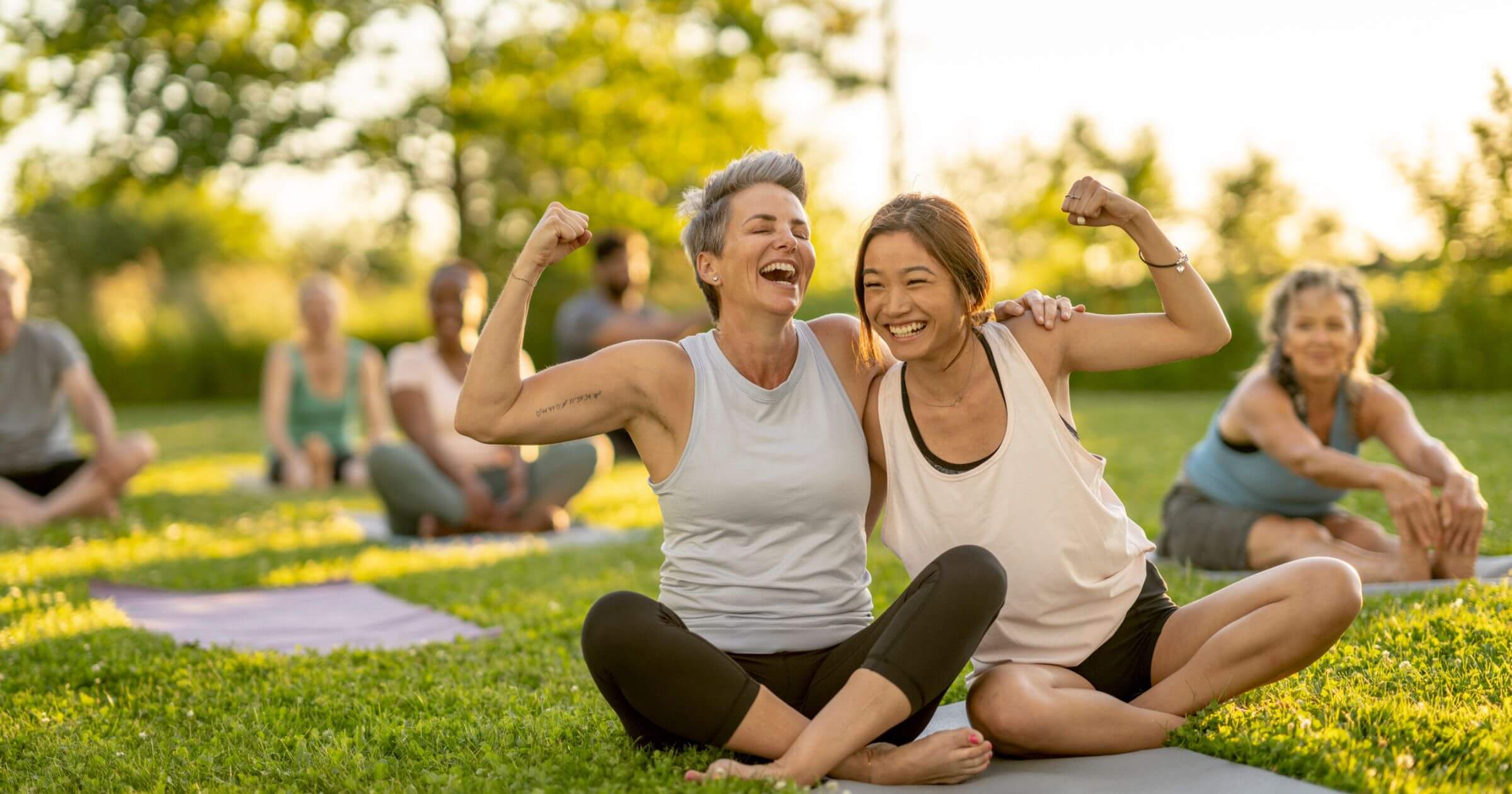
Tamara Davison
Tamara Davison is a journalist who specializes in sustainability and the environment. Reporting from around the world, she's seen firsthand the direct impact waste is having on coastal communities and our oceans. As a diver trained in ecological monitoring, the changes Tamara has seen in marine habitats inspired her to action. She's previously written for The Guardian, The Independent and the Evening Standard. She's also produced environmental documentaries for EuroNews.
Signing up for the gym is only half the battle — you also need to find the right workout clothes that make you feel good while putting the effort in. After all, who wants to wear uncomfortable polyester gym leggings that don’t let your skin breathe?
Given that a growing number of consumers are looking for sustainable clothing brands, it’s no surprise that the activewear and gymwear sectors are also undergoing an eco-friendly revolution.
In 2024, a rising number of workout clothing brands are prioritizing their environmental commitment. Here’s our pick of the best sustainable exercise brands on our radar.
What’s on this page?
01 | Top sustainable workout clothes brands02 | What is the best sustainable fabric for activewear?
03 | Why is sustainable workout clothing important?
04 | Summary
05 | FAQs
Top 7 sustainable workout clothes in 2024
| No. | Brand | Best for |
| 1 |
Girlfriend Collective |
Recycled materials |
| 2 |
MOVE by MATE |
Organic products |
| 3 |
Iron Roots |
Plastic-free products |
| 4 |
Vuori |
Ethical practices |
| 5 |
TALA |
Style-meets-sustainability |
| 6 |
Gorilla Wear |
Sustainable logistics |
| 7 |
Gngr Bees |
All-rounder |
1. Girlfriend Collective
Best for: recycled materials
Girlfriend Collective, a Seattle-based retailer, has already earned its name as an on-trend activewear brand for 2024 thanks to its stellar collection of gym tops, sports bras, and leggings.
It’s also a trailblazer in sustainable gym clothes, as the brand makes its garments from recycled water bottles, fishing nets, and waste fabrics. The brand uses processes like 'polymerization' to transform waste into soft, recycled yarn. On top of that, they dye their clothing with eco-friendly dyes and carefully clean wastewater before disposal.
Girlfriend Collective displays all this information alongside their garments on their website. So shoppers know that their leggings, for example, are made from 79% recycled plastic bottles and 21% spandex, saving 25 water bottles from landfill and 3.11 gallons of water from going to waste.
2. MOVE by MATE
Best for: organic products
MOVE by MATE is a collection of organic activewear that’s comfortable, non-toxic, and kind to our skin. But how are organic materials better for the environment?
Conventional cotton is considered damaging to the environment due to heavy farming, pesticide use, and excessive water consumption. For example, manufacturing one t-shirt with conventional cotton reportedly drains 2,700 liters of water, significantly depleting resources. That’s similar to the amount of drinking water one person uses in two years.
Many activewear brands are switching from fast fashion trends to organic materials as a result. Organic cotton helps keep the soil healthy, requiring fewer resources like water. Organic materials are also better for our bodies as they're even more breathable than regular cotton — helping you to stay cool on the treadmill.
MOVE by MATE champions organic materials by aiming “to provide people everywhere with essentials that are clean from seed to skin.” The women-led initiative has achieved several reputable certifications, demonstrating their environmental commitment, including Climate Neutral, GOTS, and B Corp.
3. Iron Roots
Best for: plastic-free products
According to Iron Roots, activewear manufacturers make over 90% of all sportswear from synthetic materials like polyester, nylon, or elastane. These materials are troubling as they aren’t biodegradable and ultimately add to plastic pollution that negatively impacts our planet.
Iron Roots, created by three friends frustrated by the plastic in their gym clothes, is trying to change that narrative.
The sportswear brand is committed to creating plastic-free garments by using alternative materials like hemp, eucalyptus, and beechwood, to name a few. These fast-growing natural ingredients require less water, making them more sustainable than materials like conventional cotton. And because the ingredients are natural, they don’t contribute to long-lasting waste like polyester products.
On top of that, Iron Roots also uses European factories that are Global Organic Textile Standard (GOTS-certified), meaning its natural materials adhere to the highest standards. Having its factories located in Europe ensures its products are locally produced and require less long-haul shipping.
4. Vuori
Best for: ethical practices
Athletic and leisure wear brand Vuori is taking the world by storm. Having launched in California, Vuori has already expanded to leading UK outlets, including Selfridges and Harrods.
Given the rise of conscious consumerism, Vuori understands that an increasing number of customers want to back sustainable and ethical brands. That’s why Vuori is working on reducing plastic use by 80% across its supply chain.
While overseeing supply chain sustainability can be difficult for some companies, Vuori only works with manufacturers with written environmental policies and standards. The brand only partners with vendors who strive to reduce their environmental impact, and its manufacturers must also respect local water usage.
In addition to making its garments ethically, Vuori is committed to reducing waste. It’s one of the many brands partnered with CleanHub to offset its plastic impact by 100%.
5. TALA
Best for: style-meets-sustainability
TALA is a sustainably-driven clothing brand, dedicated to making activewear that does the job, fits perfectly, and is affordable. Its flattering designs make you look and feel good while working up a sweat.
Moreover, it does all this while maintaining a commitment to the planet in everything it does. From being based in an office that is 100% run on renewable energy to encouraging all their staff to take public transport, TALA’s team takes its environmental commitment in its stride.
Interestingly, TALA is also big on raising awareness for ongoing issues, explaining: “Our awareness and disgust with the exploitation of people and the planet were the reason that TALA began.” TALA explains that it even challenges its overseas partners to encourage ethical practices throughout the supply chain.

6. Gorilla Wear
Best for: sustainable logistics
Like many brands on this list, Gorilla Wear champions fabric innovations by using recycled materials across its designs — but that’s not all. Among other things, the US-based gym brand has integrated positive actions into its logistics.
Global transport accounts for over 12% of the world's emissions. One study looked at the six most polluting ecommerce businesses and found that the last-mile transport emissions, typically from delivery vans, amounted to 4.5 megatons of CO2 per year — equivalent to powering more than half a million homes.
Unfortunately, last-mile transport is often overlooked as a necessary part of the retail and ecommerce dynamic, but Gorilla Wear is trying to change that.
In addition to using recyclable packaging, Gorilla Wear has partnered with sustainable courier services that use low-emission vehicles. All of their delivery partners also have approved carbon offset programs, and the brand has optimized its transport routes to drive down emissions even further.
7. Gngr Bees
Best for: all-rounder
Founded in 2019 by Natalia Grisard, this London-based activewear brand ticks all the right boxes. Natalia’s love for wildlife inspired this project — and now, Gngr Bees is on a mission to change the world with its planet-friendly clothing.
The brand is “driven by purpose, not profit” and focuses on using materials that have been thrown away. So far, Gngr Bees has reclaimed over 45,871 plastic bottles, 13,747 sheets of newspaper, and 4,037 kilograms (kgs) of fishing nets.
But that’s not all; its entire supply chain, from raw materials and packaging to logistical operations, is designed with sustainability in mind.
As well as helping people feel good about their workouts, Gngr Bees has also launched a foundation and is supporting several broader community projects, including Azizi Life and Beach Collective. They’ve planted 2,712 mangroves and helped recycle 1,033 kgs of ocean-bound plastic.
What is the best sustainable fabric for activewear?
In 2020, polyester constituted about 52% of all fibers in the textile industry. This is a synthetic material derived from crude oil, which many know is terrible for the environment.
Like other plastic items, polyester goods affect climate change and pollute the planet for hundreds of years after being disposed of.
Statistics reveal that manufacturers still make most activewear clothes from polyester. Other prominent materials include nylon, neoprene, and polypropylene, which derive from crude oil.
However, the market is slowly shifting, as consumers place more value on good quality clothes that are kind to our skin and the planet.
Environmentally friendly materials, such as organic cotton, hemp, and artificial cellulosic fibers (materials made from bamboo, for example), are growing in popularity. Moreover, many brands are switching to recycled plastic, as it delivers high-quality activewear and reduces waste.
Why is sustainable workout clothing important?
It’s no secret that the fashion industry, of which workout clothes are a part, greatly strains our environment. The sector is responsible for up to 10% of global emissions and is the second-largest water consumer among all industries.
The fast fashion industry is troubling, as it promotes a throwaway culture that relies on low-quality, low-cost clothing. The reality is that the equivalent of one rubbish truck full of clothes is still dumped in landfills every second.
Given that most activewear is still made from synthetic materials that don’t biodegrade for decades, you can see how problematic this is. That’s before we even look at the environmental challenges of plastic packaging, which most garments come in.
The fact of the matter is current practices in the fashion and retail world must change — and that’s where sustainable workout clothing comes in.
Various findings have shown that a growing number of people value health and wellness, especially following the pandemic, and demand for workout clothes will keep rising.
Market reports estimate the sustainable athleisure market to be valued at around $94.01 billion in 2023, a compound annual growth rate of 8.7%. Not only is it better for the planet, but it’s also a lucrative sector witnessing a surge in consumer demand. By making garments more environmentally friendly, brands can cater to increasing consumer appetite for both activewear and sustainability.
Summary
The growth of sustainable workout clothes gives us a lot of hope. There are many fantastic activewear brands to choose from in 2024, meaning shoppers can make conscious decisions without compromising gym style, functionality, or comfort.
Thanks to the rise of sustainable activewear, people can positively impact their health and the environment — and that’s something to feel good about.
For activewear brands, this is also a pivotal moment. As demand for environmentally friendly activewear rises, brands must commit to sustainable practices. What this list of brands demonstrates is there are so many ways to make a difference — and this is shaping up to be an activewear movement that we should all be excited about.
At CleanHub, we help brands improve their environmental impact and reduce plastic waste. Want to know which brands are working with us to help our planet? Check out our Brand Directory to see the businesses committed to tackling plastic waste with us.
FAQs
What is the most sustainable sports brand?
Now, many sports brands prioritize sustainability in material sourcing, manufacturing processes, logistics, supply chain optimization, packaging, and waste management. The brands mentioned on this list are a small sample of a growing sustainable sportswear industry.
What are the men's athleisure trends for 2024?
It looks like it’s all about experimenting with unique fits and silhouettes this year in men’s athleisure. We’ve seen a lot of loose-fit, wide-legged joggers, for example, as well as earthy tones and a focus on high-quality materials. Most importantly, sustainability will be a big trend — so we’re seeing a rise in environmentally conscious brands.
What are the trends in sustainable sportswear?
Sustainable sportswear refers to ethically made clothing that’s good for the environment. That means focusing on materials like organic cotton, which is less demanding on resources. There will also be a shift when it comes to synthetic materials, with brands opting to recycle materials instead of manufacturing new products.




%20(1).webp?width=380&name=Clothes%20(1)%20(1).webp)
%20(1).webp?width=380&name=Summer%20(1)%20(1).webp)
.webp?width=380&name=Paper-packaging%20(1).webp)
.webp?width=380&name=trash%20(1).webp)

.webp?width=380&name=recycling%20(1).webp)
.webp?width=380&name=Farming%20(1).webp)

